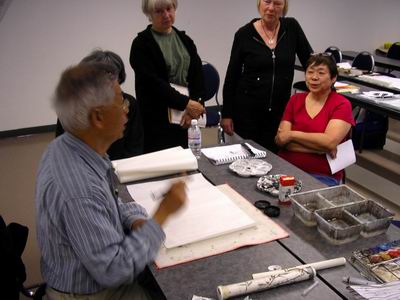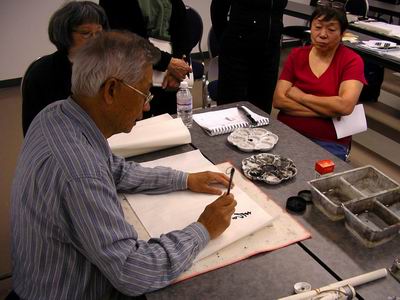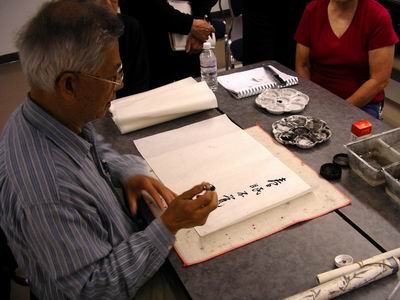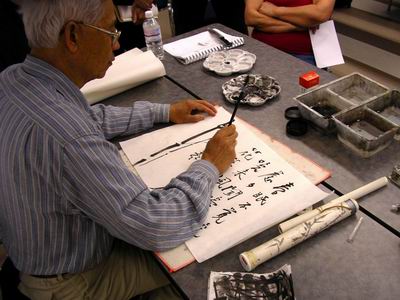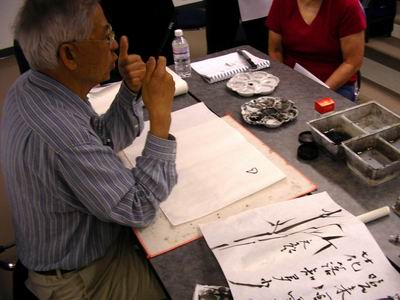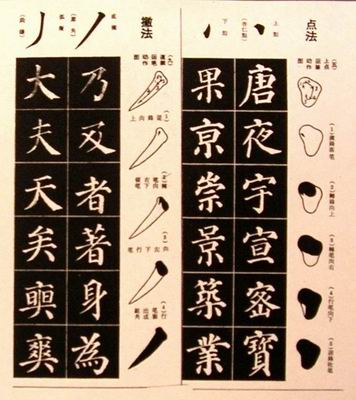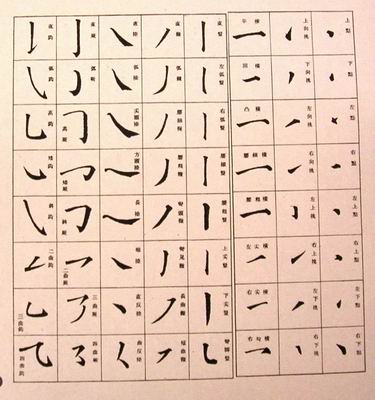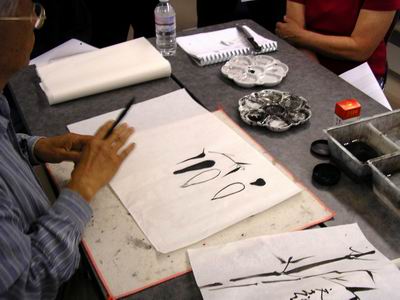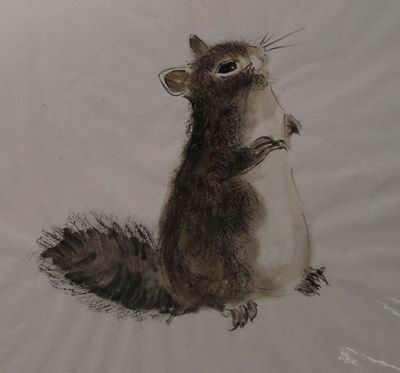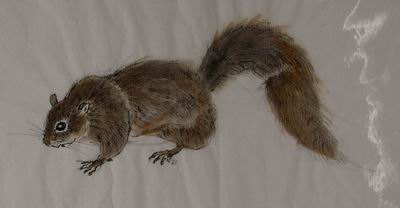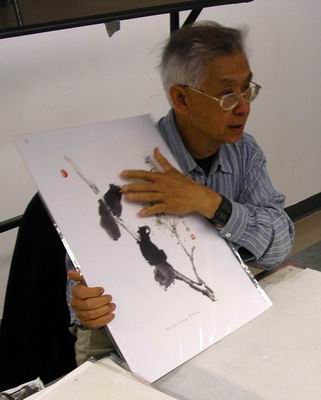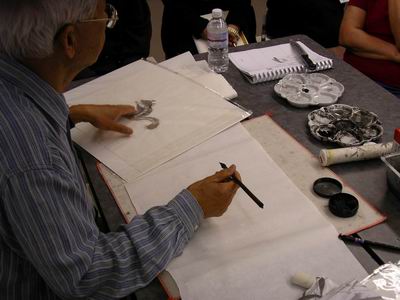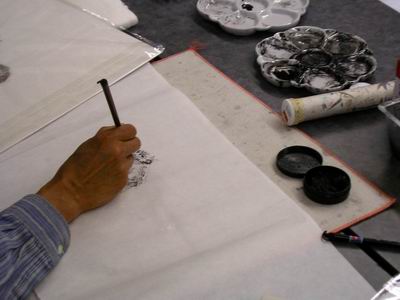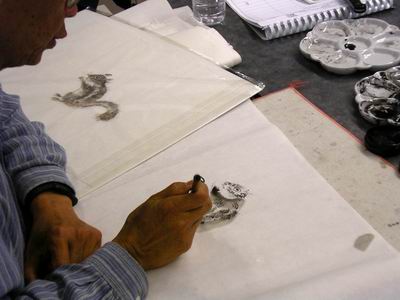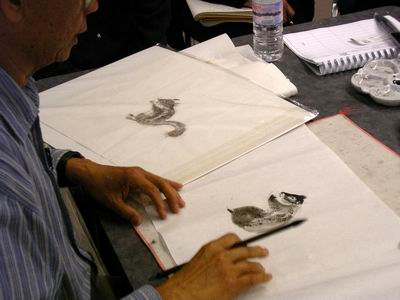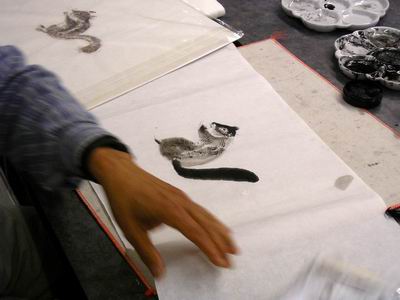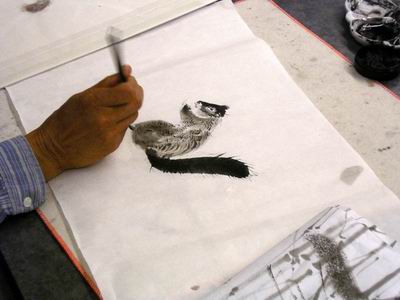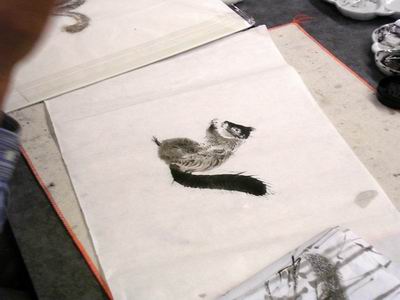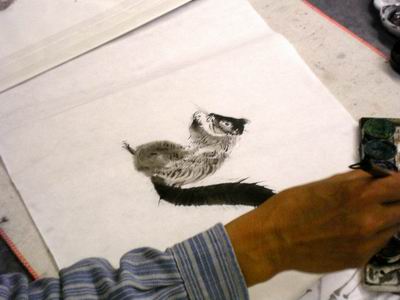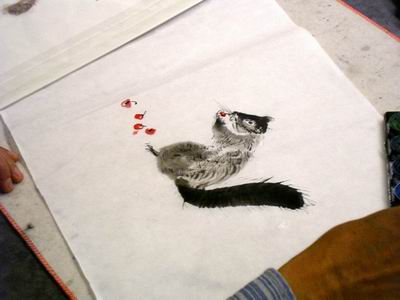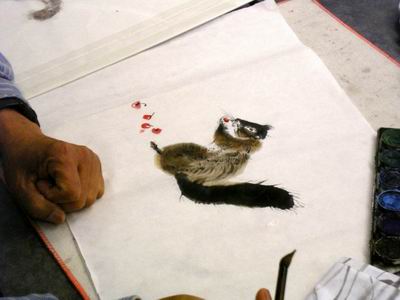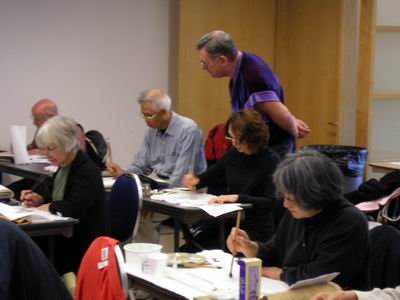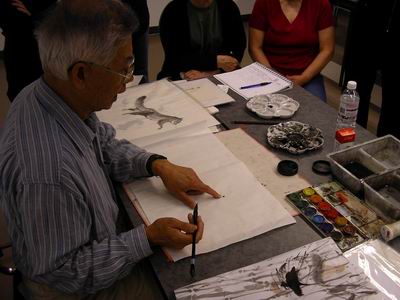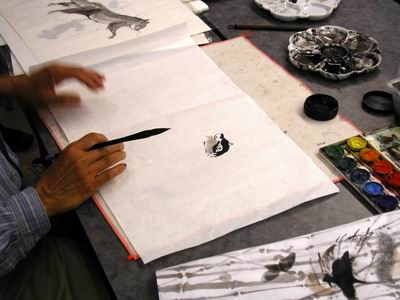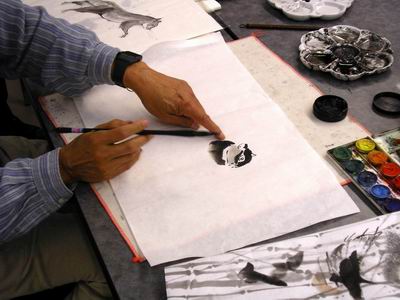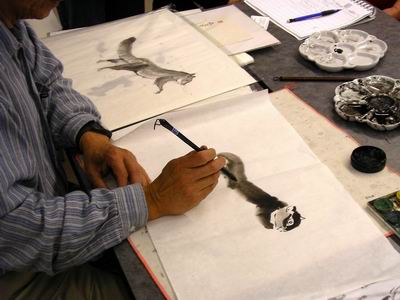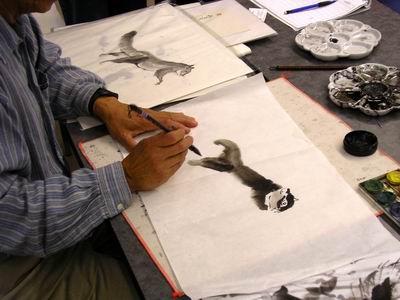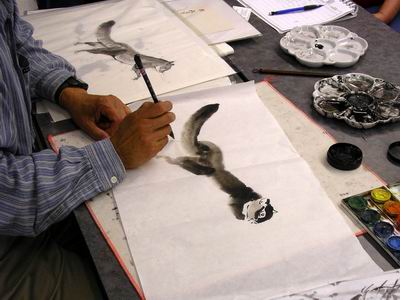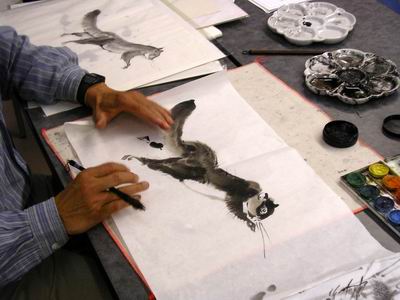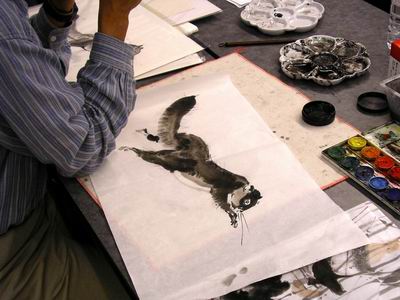Squirrels with Charles Leung - May 10th, 2008
Squirrels are fun-loving creatures to paint. Yet they are also more challenging to paint than you might first think. Charles Leung sees many on his large property on the outskirts of Toronto (Lindsay, Ontario) and has taken the time to study them. Learning how to paint a squirrel helps you paint other small animals.
Charles began his workshop by discussing the link between calligraphy and painting. Did you know that calligraphy may have come first?
To demonstrate, Charles began by writing a poem.
Charles Leung explained that the strokes used in calligraphy are similar to the ones used in sumi-e painting. It is not surprising that some of the best-known sumi-e artists practice both arts.
Charles wrote the following ancient poem:
I slumbered this spring morning, and missed the dawn,
From everywhere I heard the cry of birds,
That night the sound of wind and rain had come,
Who knows how many petals then had fallen?
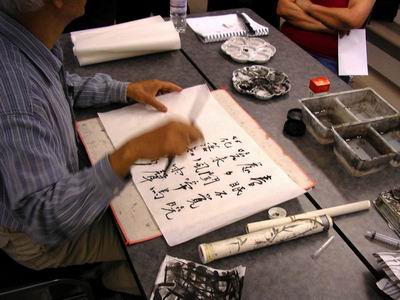
Charles then finished by adding some bamboo with the same brush and sumi-e ink. It was an interesting twist as usually artists work with the painting and then add the calligraphy.
Charles reminded us to focus on brush strokes. Mastering these brush strokes would lead to creating the types of paintings we want.
Charles Leung helped the workshop participants considerably by bringing some handouts that demonstrated the brush strokes, particularly where to start and what to emphasize and when to lift the brush off the paper.
The brush strokes can be used in both calligraphy and sumi-e painting. Simply practicing them can help you in both.
As an example, Charles showed how these brush strokes show up in sumi-e paintings of plants and leaves.
Turning to the squirrel, Charles Leung showed some examples he had brought of how to paint these entertaining creatures.
Both these examples use the fine line way of painting, with details created first and then an overlay of colour.
An example of free style or boneless style for creating squirrels was also shown to the workshop participants.
Charles started on his first squirrel. It would be created using the fine line approach; that is, creating a detailed squirrel with small brush strokes. Charles Leung has traveled throughout the world teaching painting and while demonstrating often added some commentary on the different approaches he has seen. Only recently, Charles returned from China and had some astute observations on the new industrialized China and the old, traditional culture.
Using a brush and sumi-e ink, Charles sketched the structure and outline of the squirrel.
Then, with sumi-e ink, Charles added a wash over the details for the fur.
The head and body of the basic squirrel emerged.
The tail was made in one stroke starting from the the squirrel and extending to the tip of the tail.
Hair was added with some quick strokes.
Then came the paws and claws.
Whiskers were added to the head.
Charles Leung, like any accomplished artist, thinks in terms of composition as he is painting. The squirrel subject, which was the centre of the composition, was offset with bright, red cherries, bringing the painting to life from a composition and colour perspective.
Using a brown wash, Charles added the colour of the squirrel's fur.
Then it was our turn to try our hand at squirrels. Most workshop participants (at any workshop) would agree that it always seems easy when the instructor creates the painting! But we were here to learn and that means trying to paint the subject ourselves. Charles Leung provided some one-on-one coaching.
Returning to the demonstration table, Charles showed us in the second half of the workshop how to paint a squirrel using the free style or boneless style of painting. This time Charles chose a jumping squirrel as the subject.
The head was the starting point. The eye came first with darker brush strokes about it to create the rest of the head and ears.
A single brush stroke with sumi-e ink created the shoulders. Then Charles indicated where to start the back, which would be done with one stroke.
The brush should have considerable ink to create the back of the jumping squirrel.
Charles Leung then added the hind legs.
The tail was added in one stroke like the back.
The paws, claws and whiskers were added similar to the previous squirrel painting.
Charles added some minor touches with black ink to highlight parts of the squirrel.
Painting the squirrel in either the fine line or free style way can teach you generally how to paint small animals. Charles Leung provided us with the subtle techniques you need to know. Charles also reminded us how important it is to practice basic brush strokes. Calligraphy is one of the best ways to develop your brush strokes.
